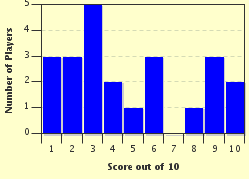Quiz Answer Key and Fun Facts
1. What is the name of the main tribe of people who occupied the area that is now Bogota prior to the invasion of the Spanish?
2. Who was the conquistador who claimed Bogota for Spain in 1537?
3. Traditionally, the founding date of Bogota is August 7, 1538 which was the day what happened?
4. From the late 16th century through the 17th century, Bogota was internationally famous for its educational institutes specifically in what area?
5. Jose Antonio Galan was the leader of the failed Comuneros Insurrection against Spanish rule in 1781. Who were comuneros?
6. What is the name of the famous Prussian botanist who arrived in Bogota to study the native flora in 1801?
7. When Francisco Jose de Caldas, a leader in the independence movement, was executed in 1816 in Bogota, what did the Spanish General Pablo Morillo, who ordered the execution, say that became something of a slogan?
8. Colombia achieved independence from Spain after their victory in which battle?
9. During the mid 20th century, Bogota experienced a period of severe violence. One of the most notorious incidents was in 1948 with the riot known as El Bogotazo. What sparked El Bogotazo?
10. Which organization was blamed for the 2003 El Nogal Nightclub Bombing that killed 36 people?
Source: Author
Joepetz
This quiz was reviewed by FunTrivia editor
bloomsby before going online.
Any errors found in FunTrivia content are routinely corrected through our feedback system.


